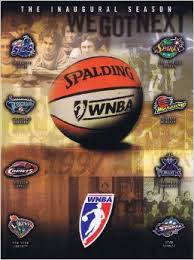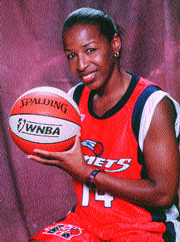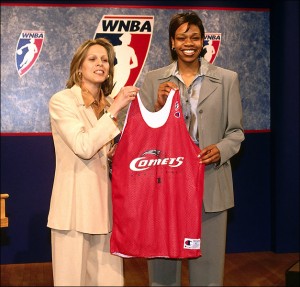As of 2015, Oprah Winfrey is the sole black American female present on Forbes’ list of billionaires.1 From meager beginnings in rural Mississippi, and a childhood entrenched with bouncing between family households, facing discrimination as a black girl in the south, and experiencing sexual abuse at the hands of both friends and family members, Oprah would become the biggest name in television talk show history. She is by all accounts the definition of a self-made success.
In 1996, ten years after the start of The Oprah Winfrey Show, Winfrey introduced Oprah’s Book Club which selected a feature text to be discussed by both audience members and the author during a new show segment. Winfrey presented the idea for a national reading club to a studio audience stating, “I want to get the whole country reading again. Those of you who haven’t been reading, I think books are important.” As the first text, Oprah selected The Deep End of the Ocean by Jacquelyn Mitchard, a first time author. Judging by USA Today’s Bestseller’s Lists, it was clear that Winfrey’s influence was indeed leading Americans to read. Choosing 48 books between 1996 and 2002 when the show ended, “Each book joined the top 150 best-selling titles in America for at least a few months… Of the 45 adult books, only five were on the top 150 list the week before being featured by Oprah…Just eleven of the 45 books had been part of the top 150 at some time before Oprah featured them on her show. Furthermore, the highest ranking any book had achieved before its book club introduction was just 25.”2 In research extending to 2011, Fordham University found that, “Of the 70 books she singled out, 59 made it to the USA Today bestseller list.”3 Statistically speaking, it is likely that many of the selected authors would not have achieved the levels of success they reached without Winfrey’s endorsement.
Quoting David Kipen, former director of literature for the National Endowment for the Arts, USA Today writes that, “At the club’s peak, ‘Oprah gave America an excuse to talk about books every couple of months…She served a useful purpose in the same way that the myth of summer reading does: reminding the forgetful that reading exists, which greatly expands the number of people us bookish types can talk to.’”4 Winfrey’s ability to influence the masses while simultaneously bringing them together is the same strength that allowed her book club to flourish. Whether they were avid readers beforehand, or they simply chose to read books as Oprah supporters, Americans were reading.
The impact of The Oprah Winfrey Show is unquestionable and is evinced by her 25 year run as a daytime talk show host—the most successful of the 90s. In 1996, the same year she founded her book club, Oprah received both the Peabody Award and the Daytime Emmy for both Outstanding Talk Show Host, and Outstanding Talk Show. As another display of her dominance over the 1990s talk show world, Winfrey received both of the aforementioned Daytime Emmy’s six times in the decade. What makes Oprah’s prominence most fascinating is her station as a black woman with a television program that was viewed by a predominantly white, female, middle-aged audience.5 Of all people, a woman who emerged from a poor, rural upbringing in highly racialized Mississippi was able to connect with and influence an antithetical viewership despite not being the typically idealized version of womanhood. She was unabashedly single, without children, outspoken, and adept at navigating interview topics ranging from the delicate to the entertaining. This influence reached far beyond the small screen as Oprah used the talk show platform as a catalyst political change. After publicly sharing her personal story of abuse, Winfrey advocated at a Senate hearing for the National Child Protection Act. In 1993, Bill Clinton signed into law what would be known as the “Oprah Bill.”6
In ranking Oprah’s ten most memorable moments, NBC’s Today contributor Randee Dawn opens the article stating, “Oprah Winfrey is a kind of teacher. Since 1986, via her classroom called ‘The Oprah Winfrey Show,’ she’s taught us it’s OK to cry, OK to share our problems, OK to give away cars to an entire audience and OK to love books. In return, she has earned the uniquely American honor of being known by her first name only.”7 Most fascinating about Dawn’s comment is the notion of the talk show host being known by only her first name. There simply is no other Oprah, but first names are intimate; they signify a closeness to an individual, a familiarity with that person. Oprah managed to create a personal relationship with television viewers in the comfort of their own homes. Whatever drew and continues to draw us to her, Winfrey’s impact on American entertainment is incontestable and likely here to stay. —Mara Johnson
- Nsehe, Mfonobong. “The Black Billionaires 2015.” Forbes. Forbes Magazine, 2 Mar. 2015. Web. 30 Nov. 2015.
- Butler, Richard J., Benjamin W. Cowan, and Sebastian Nilsson. “From Obscurity to Bestseller: Examining the Impact of Oprah’s Book Club Selections.” Publishing Research Quarterly 20.4 (2005): 23-34. Communication & Mass Media Complete. PDF File.
- Jacobson, Murrey. “The Oprah Effect, by the Numbers.” PBS. PBS, 25 May 2011. Web. 22 Nov. 2015.
- Minzesheimer, Bob. “How the ‘Oprah Effect’ changed publishing.” USA Today. USA Today, 22 May. 2011. Web. 22 Nov. 2015.
- Anburajan, Aswini. “Breaking Down Oprah’s Numbers.” NBC News. NBC News, 7 Dec. 2007. Web. 20 Nov. 2015.
- Fetini, Alyssa. “Top 10 Oprah Moments.” Time. Time, 25 May 2011. Web. 20 Nov. 2011.
- Dawn, Randee. “Oprah’s 10 Most Memorable Moments.” Today. NBC News, (2011). Web. 21 Nov. 2015.




